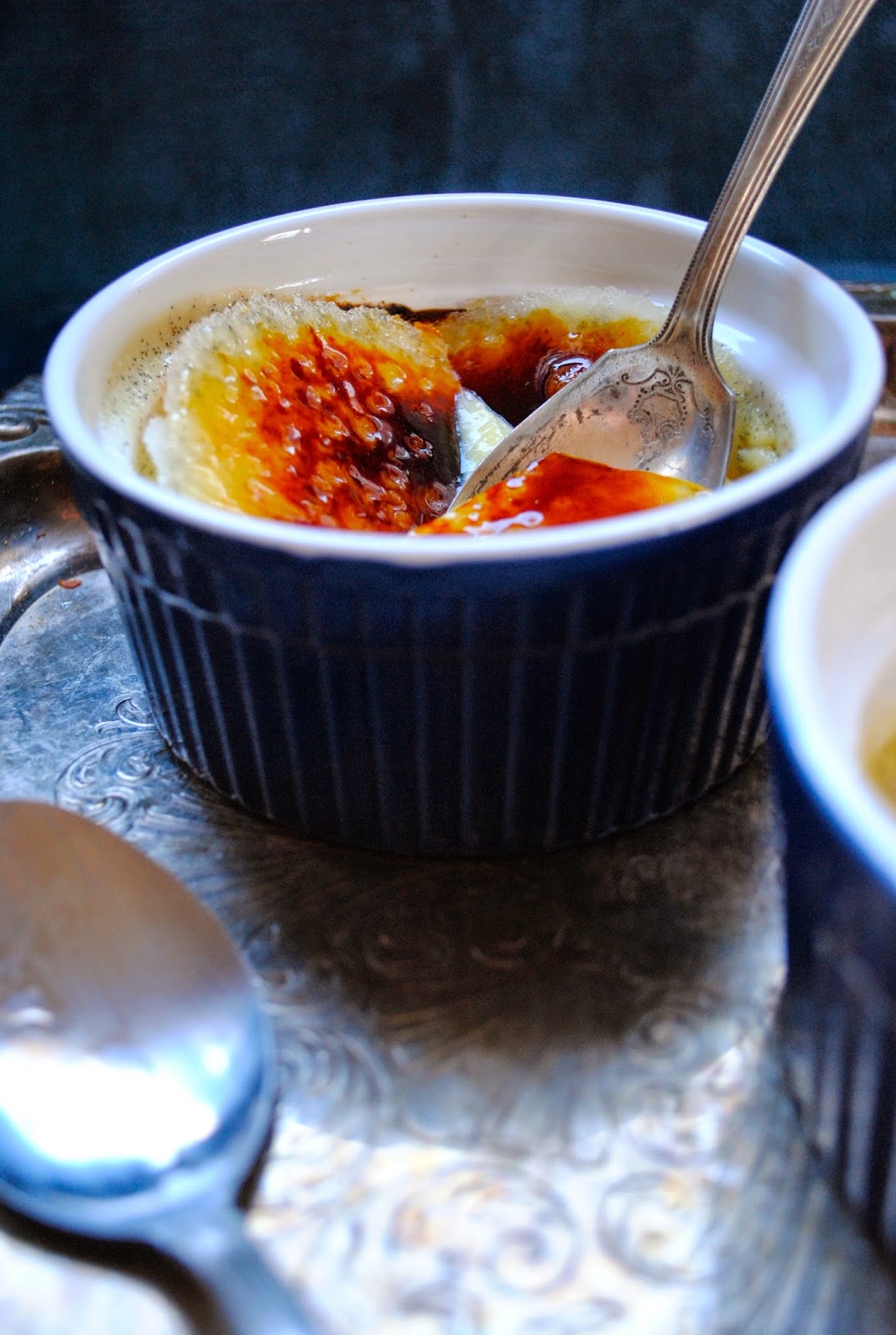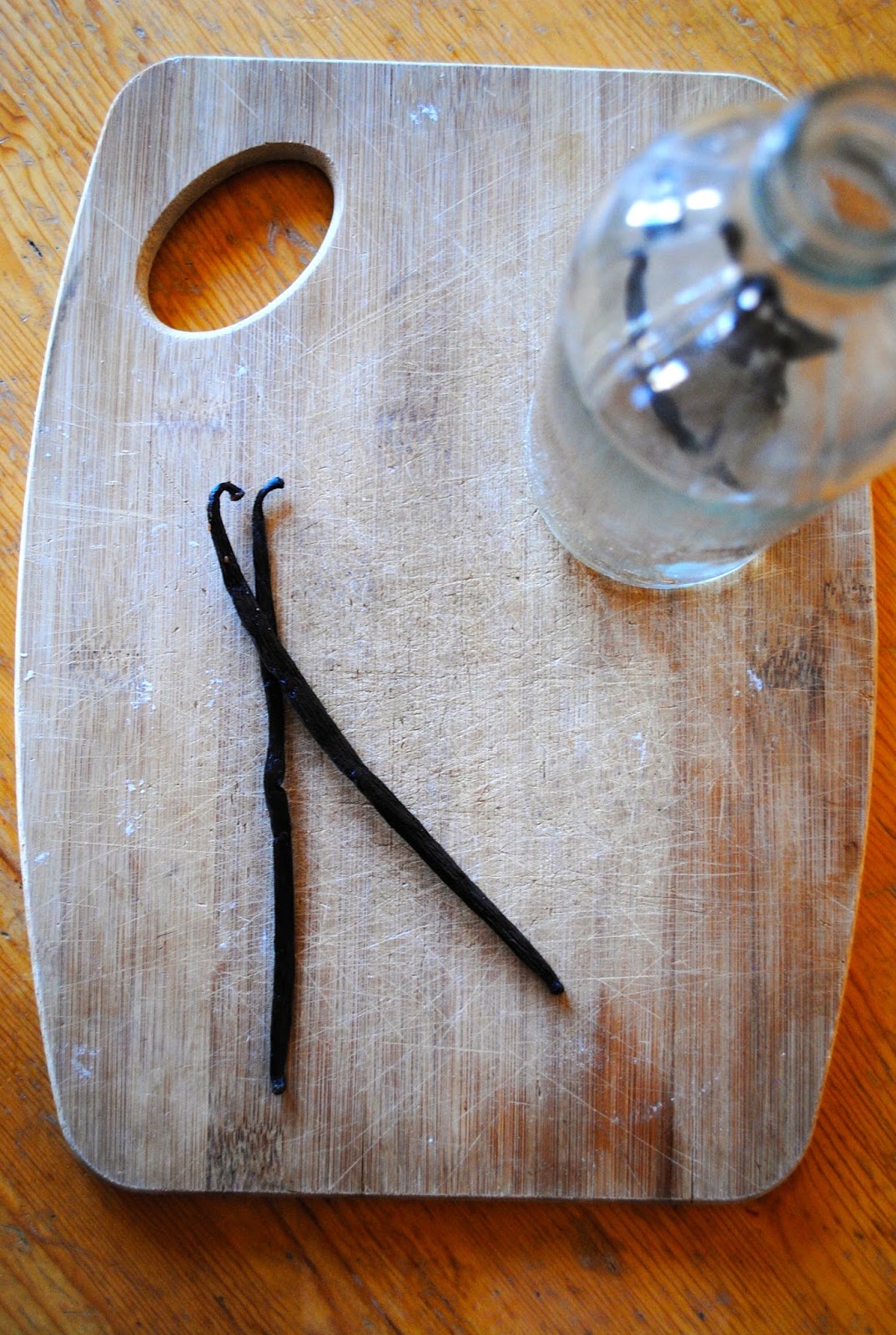There's nothing better than the scent of freshly baked bread filling the house. There is something so warm and comforting about it, no matter how dreary or cold or snowy the day.
I've been defiant in the face of the recent anti-gluten hype — it seems everything can be made gluten-free or paleo these days. With options for gluten-free pasta, gluten-free bread, gluten-free cookies, gluten-free
everything, I say us gluten-eaters revel in the glory of real wheat bread. More bread for us!
Because honestly, is there anything more wholesome than a loaf of homemade wheat bread formed by your own two hands after days of preparation and hours of care?
That's what sourdough is. This kind of bread making is a process, a carefully thought-out transaction between you, time, and the micro-organisms. It's a messy act of patience and commitment and devotion that pays off in the end (I promise!) when those two golden brown crusty loaves come out of the oven.
{Whole Wheat Country Sourdough Loaf}
If you haven't read Cooked by Michael Pollan yet, head on over to your local bookstore and grab a copy. Like everything by Pollan, the book is semi-life-changing if you are into food - which I assume you are if you're reading this blog. In the book, he explores the evolution of cooking in terms of fire (barbecue), water (braising meat), earth (fermenting), and air (bread baking). Pollan takes the reader along on his own journey to master each cooking concept, and I'm going to pull you along too! Beginning with bread.
Pollan breaks down a recipe from Tartine Bakery's Chad Robertson for his iconic country loaf. I remember the first time I had a loaf of this incredible bread from Tartine Bakery last time I was in San Francisco, so the prospect of baking this bread was an exciting one. So here we go:
Okay, so you've got your apron tied around your waist, your oven pre-heated, and your counter cleared — you're ready to make a loaf of bread. But hold up! This is sourdough we're talking about here, and it's made from wild yeast. At least a week before you can begin thinking about baking actual bread, you need to make your starter.
Remember, bakers use a gram scale to measure out the exact amounts of ingredients (it's way more accurate than measuring cups). We'll do it too.
Active Time: about 70 minutes
Total Time: between 5 and 10 days
Making The Starter
Ingredients
50 grams stone-ground whole wheat flour, plus more as needed to feed the starter
50 grams all-purpose flour, plus more as needed to feed the starter
100 grams warm water
Direction: In a small glass or plastic container, mix 50 grams each of the whole-grain and all-purpose flours until combined. Feel free to use your hands, as this might help the wild yeast find its way to your starter. Add the water and stir until it reaches the consistency of a smooth batter. Leave the mixture open to the air, stirring for about 30 seconds at least once a day. If the mixture dries out, add a bit of warm water. The wild yeast and bacteria in the air, on the flour, and on your hans will eventually start to eat the sugars in the flour and ferment. When this starts to happen, you'll notice lumps on the top, bubbles in the batter, and a certain smell — mine smells like yeast and beer, others smell like ripe fruit. It can take as long as a week before this happens. Feed the starter daily: Discard about 80 percent of it and replace with fresh flour and water in equal parts (50 g of whole wheat, 50 grams of all-purpose, 100 grams warm water). Stir until smooth.
At this point, I gave my starter a name, since he'd begun to feel like a bit of a pet. This helps me remember to feed him every day.
Once the starter has become active after its feeding (bubbling), keep the starter covered at a warm room temperature. If you won't be baking for a whole, you can refrigerate it. To do so, feed it, let it sit for a couple of hours at room temperature, then add enough additional flour to dry it out in a ball; freeze or refrigerate. A few days before you want to use it again, wake up the starter by brining it to room temperature; feed it with the same amount of water and flour as above twice daily, discarding 80 percent of it each time, until it's lively again.
The Night Before
Now that your starter is consistently rising and falling alongside his feeding schedule, it should take on a yeasty, apple-like smell especially when it's young (right after a feeding). Now you are ready to bake bread. Almost.
The night before you want to bake, you are going to make the leaven and prepare your bread dough.
Leaven
Ingredients
100 grams stone-ground whole grain flour
100 grams all-purpose flour
200 grams warm tap water
30-35 grams (about 2 heaping tablespoons) starter
Directions: In a glass bowl, combine the flours and water and stir. Add the starter and mix thoroughly with your hands. Cover with a towel and leave overnight in a draft-free spot.
Bread Dough
Ingredients
600 grams stone-ground whole grain flour
250 grams all-purpose flour
150 grams rye flour
900 grams water tap water
25 grams sea salt
The flours need to be soaked in order to soften the bran in the whole wheat flour. This will lead to a fluffier and airier bread. Combine the flour in a large bowl with 850 grams of the water. Cover with plastic wrap and leave overnight in a draft-free spot.
Note: Pollan recommends sifting the whole wheat and rye flours to remove the bigger bits of bran, which can cause tears in the bread dough, plus look great as decoration on the outside of the loaf. I skip this part, but feel free to do so)
In the morning, test the leaven by dropping a tablespoon in warm water. If it floats, congratulations, you have a viable leaven and you're ready to bake! Add half of the leaven to the dough mixture and reserve the remaining half as your starter going forward. Mix the dough thoroughly and let rest 20 minutes. Add in the salt and remaining 50 grams of water, mix thoroughly, and let rest another 20 minutes.
Bulk Fermentation
This next step takes 4-5 hours, depending on the temperature of the room and how vigorous your starter is. Feel it out.
Every 45-60 minutes, turn the dough in the bowl by wetting your dominant hand and giving the bread a "turn" in the bowl. Do this by working your fingerers to the bottom of the bowl, then bringing up the dough from your cupped fingers to the top. Give the bowl and quarter turn and repeat the process until you've completed a full revolution of the bowl. This stretches the gluten (giving it muscle!) and traps air in the dough. It sounds more difficult than it actually is.
Repeat this process every 45-60 minutes until the dough feels billowy and wants to stick to itself rather than the bowl. It will smell yeasty and slightly sour. If it smells distinctly sour, it is time to end bulk fermentation.
Shaping the Loaves
Shape the loaves by sprinkling a work surface with flour and spilling the dough onto the surface. Using a plastic dough scraper, divide the dough into two halves and shape them into globes using your floured hands and the scraper. The balls of dough should have some tension to them. cover the balls with a clean towel and let them rest for 20 minutes.
After that time, flip each globe of dough upside down and stretch the dough. Do this by grabbing the dough on the side farthest from you, stretching it away from you, then folding it back on the top. Do this to all four sides of the dough, stretching and folding, and it will resemble a package. Then, repeat the process to the four corners of that package. Then roll the package away from you into a cylinder, with the seams underneath. Repeat with the other globe of dough. If you reserved the bran, sprinkle the bran on the bottom of two bowls and place the dough in there for final proofing. Or, sprinkle the bowls with rice flour.
Proofing
Cover the bowls with a towel and let rest for 2-3 hours in a warm spot. Alternatively, you can leave the dough in the fridge overnight. When ready to bake, take it out of the fridge and give it an hour to get back to room temperature before baking.
Baking
Preheat a dutch oven or other heavy-duty iron or ceramic covered pot to 500 degrees F in the oven. Using kitchen mitts, carefully remove the pot from the oven and onto the stovetop. Gently drop the dough into the pot (don't worry if it doesn't land squarely, it will right itself as it bakes). With a razor blade, score the bread in whatever pattern you prefer (remember to be decisive!), then cover the pot and place it back in the oven. Lower the temperature to 450 degrees and bake for 20 minutes, covered.
After that time, remove the lid of the pot. The bread should have doubled in volume and have a tan or golden brown color. Give it another 23-25 minutes, uncovered. The bread will turn dark mahogany, with some burn marks around the scoring. This adds flavor! Turn the loaves out onto a cooling rack; If they are done, they will give out a hollow sound when tapped. If not, return to the oven for an extra five minutes.
Pollan says to let these loaves cool for a few hours, but I can never resist breaking into one for fresh, hot bread. I also like that the recipe makes two loaves, meaning you can eat the first one with abandon and save the second loaf for more civilized eating. But seriously, whole grain bread is usually at its best on day two and remains good for several days after that if kept in a paper bag or bread bag (avoid plastic!).
So yes, using a wild yeast starter to make your own homemade sourdough takes a lot of time and thought and hard work. It's a full day's activity, not to mention the daily feeding of your starter in the weeks leading up to the actual baking and the night before ritual of making your leaven and preparing your dough. But it's worth it, in the end. What this bread requires into dedication in gives back in its incredible full and nutty flavor and a texture that is soft and chewy on the inside (hopefully with some awesome airy crumb!) and crusty and crunchy on the outside. And it makes it taste so much better knowing that you made it yourself, every step of the way. Long live gluten!

































